Outforia Quicktake: Key Takeaways
- Many animals lay eggs, including reptiles, insects, crustaceans, fish, cnidarians, and mammals.
- Oviparous animals produce eggs that hatch outside of the female’s body.
- Some animals are ovoviviparous, meaning they keep their eggs inside the female’s body until they hatch.
- Examples of egg-laying animals include sea turtles, snakes, lizards, bees, spiders, echidnas, platypuses, salamanders, frogs, newts, sharks, eels, crabs, corals, jellyfish, fish, and birds.
- Birds are unique as the only animal family where all members are oviparous.

When you think of animals that lay eggs, birds immediately come to mind. But it’s easy to forget there are a whole host of oviparous (egg-laying) animals across a vast range of species: from reptiles to insects, crustaceans, fish, cnidarians, and even mammals!
Oviparous means producing eggs that hatch outside of the female body.
Some animals are ovoviviparous, like the common lizard. This means they produce eggs that are kept inside the female’s body until they hatch.
Below are some egg-laying animals you may know and some you may not have thought of!
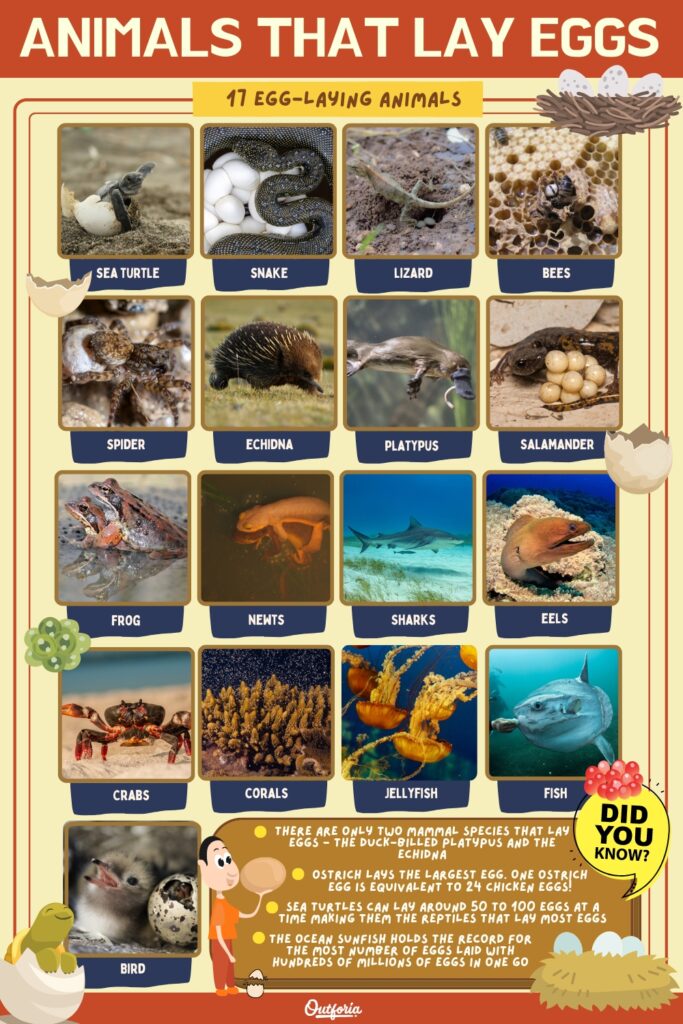
Share this image on your site
<a href="https://outforia.com/animals-that-lay-eggs/"><img style="width:100%;" src="https://outforia.com/wp-content/uploads/2023/03/animals-that-lay-eggs-infographic-0323-683x1024.jpg"></a><br>animals that lay eggs <a href="https://outforia.com">Outforia</a>Sea Turtle
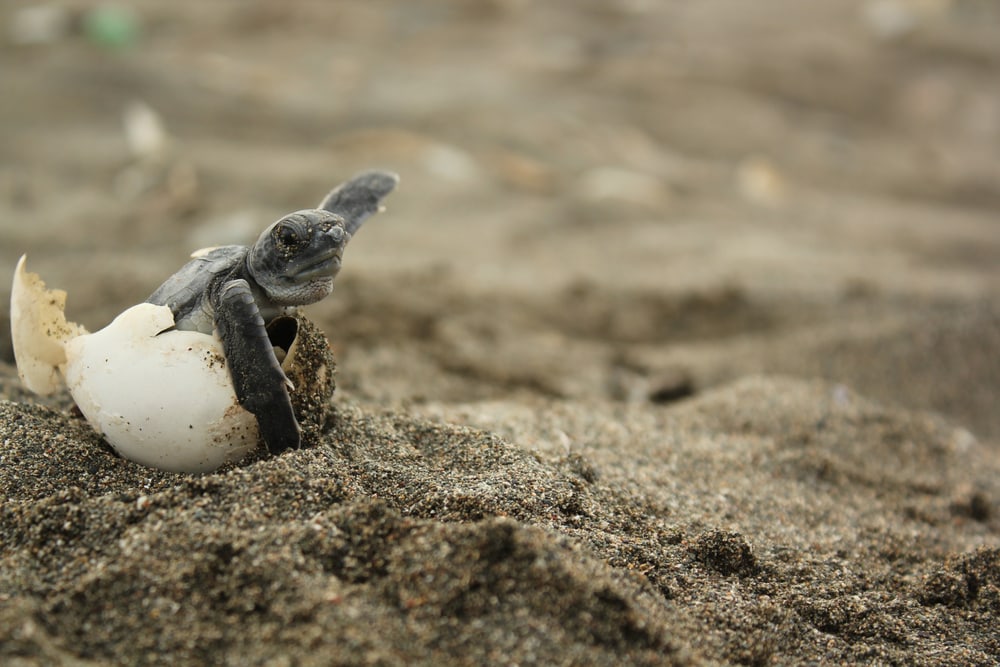
Sea turtles are reptiles rather than amphibians. They have hard, scaly, non-permeable skin that doesn’t let in water. There are seven different species of marine turtles. Female turtles live most of their long lives at sea but always return to the same beach they were born on to lay their eggs.
A female leatherback sea turtle will lay around 100 spherical eggs in a scrape she has dug in the sand. She makes strange belching noises while she does this!
After roughly 60 days of incubation, the eggs hatch, and the tiny baby sea turtles make a mad dash for the sea. Along the way, many are eaten by seabirds and crabs. Some are confused by bright lights.
About 1 in every 1000 baby turtles will survive to adulthood. What happens to the baby turtles that make it to the sea is a mystery. For the next 20 years, they slowly grow to maturity in the ocean.
Snakes

Seventy percent of snakes are oviparous. The rest are viviparous, giving birth to live young. Snakes are also known for their weird mating habits!
Egg-laying snakes lay their eggs two weeks to a month after mating. They will most often find a cavity or natural shelter, such as under a log, and lay them there.
Most species of snake lay soft-shelled eggs. These can be affected by the amount of moisture in the environment. Some also lay hard-shelled eggs.
Lizards
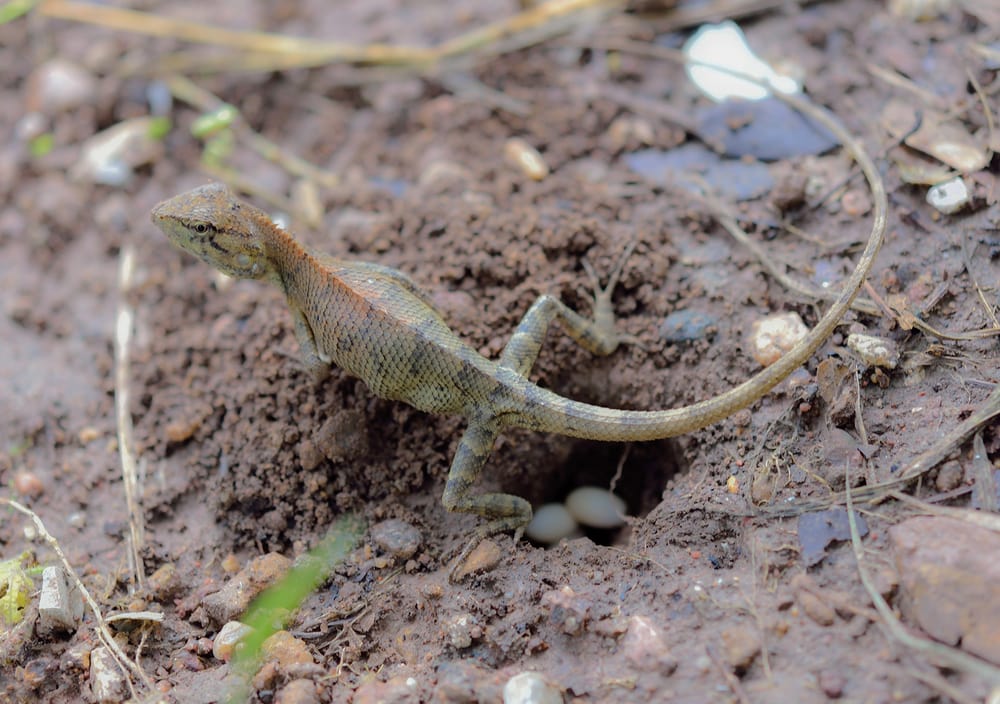
Lizards can have clutches of between 1-50 eggs. Anoles lay only one, while iguanas lay around 50. Four to eight is a typical number of eggs for a lizard.
Most lizard mothers find a warm, safe place for their eggs, like a thick clump of undergrowth. Once this is done, most of them run off with their mothering done!
There are some lizards that can reproduce by parthenogenesis (without a sexual partner)! Amazingly, the North Mexico whiptail lizard produces eggs that turn into embryos without the help of a male!
Bees
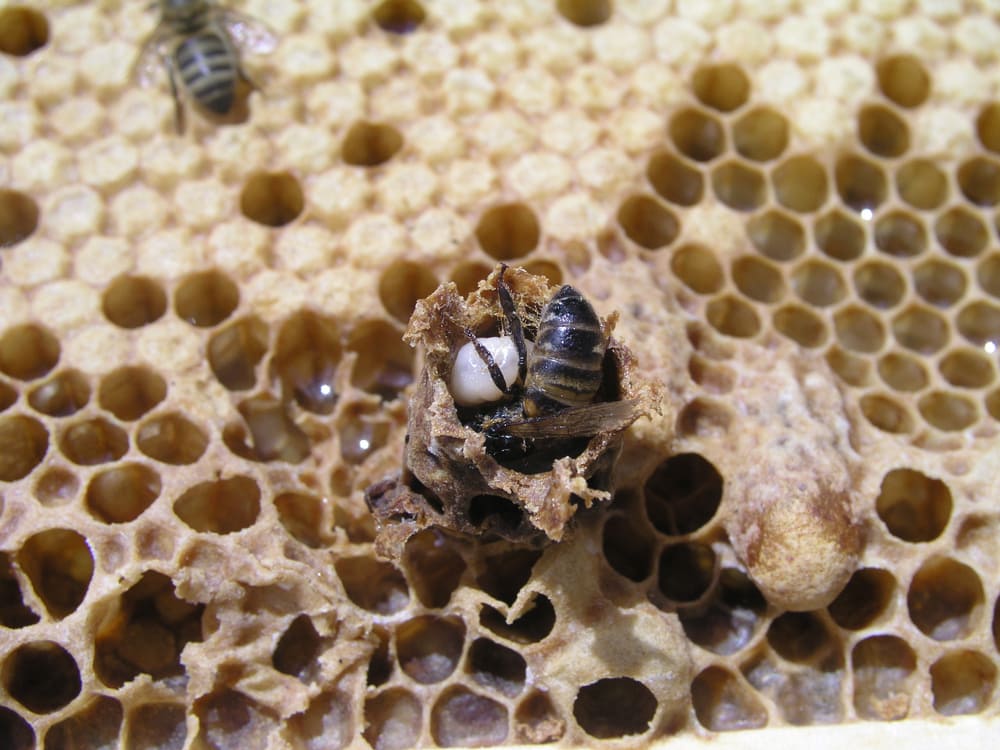
Different types of bees nest either underground, in cavities, or built nests.
A queen bee lays one egg per cell in special cells her worker bees constructed. She can lay up to 2000 eggs per day at the colony’s busiest time in spring!
She spends most of her time laying eggs in the brood chamber. Workers even carry away her poop and bring her food.
After 3 days, the eggs hatch, and the worker bees feed the larvae royal jelly for the first few days. After that, most of the larvae are fed honey and pollen. These will turn into worker (sterile female) bees. Unfertilized eggs will turn into drones (male bees).
A larva marked out to be a future queen will be fed a diet of pure royal jelly.
You may also like: How Long Do Bees Live? Everything You Need To Know About The Life Of A Bee
Spiders

Female spiders make egg sacs containing between a couple to a thousand eggs. Sometimes, they produce several egg sacs, then die shortly after. As every mother knows – most probably of exhaustion!
The egg sacs are made of fine silk. Sometimes, the female (depending on the species) will guard the egg sac until the baby spiders hatch. The European cobweb spider moves her eggs in and out of the silken sac to regulate their temperature.
Some spiders, like the wolf spider, carry their egg sac, then carry the baby spiders too, and feed them liquified prey after they have hatched. Motherhood is tough!
Echidna
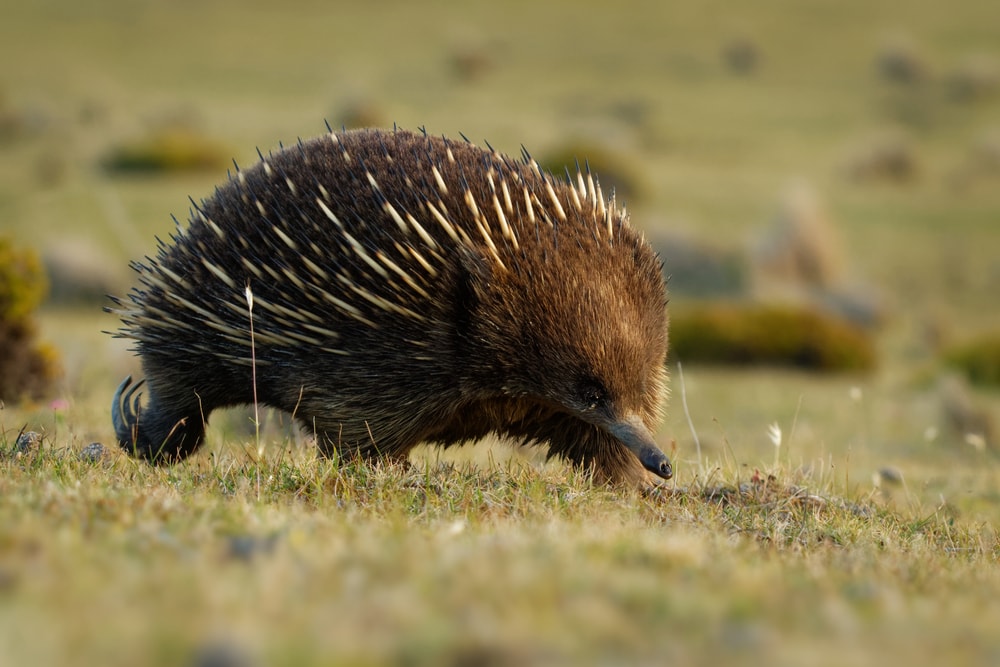
The echidna is actually a mammal – one of only two mammals that lay eggs. This strange ancient group of animals is known as the monotremes. The other monotreme is the duck-billed platypus.
A long train of up to ten male echidnas can follow a female until she is ready to mate. When the strongest male wins his way into the circle dug around the female, he mates with her using his four-headed penis!
One month after mating, the female lays just one soft-shelled egg. She puts this in her brood pouch, a little pocket on her body. After 10 days, it hatches into a baby echidna – called a “puggle.” How cute is that!
Platypus
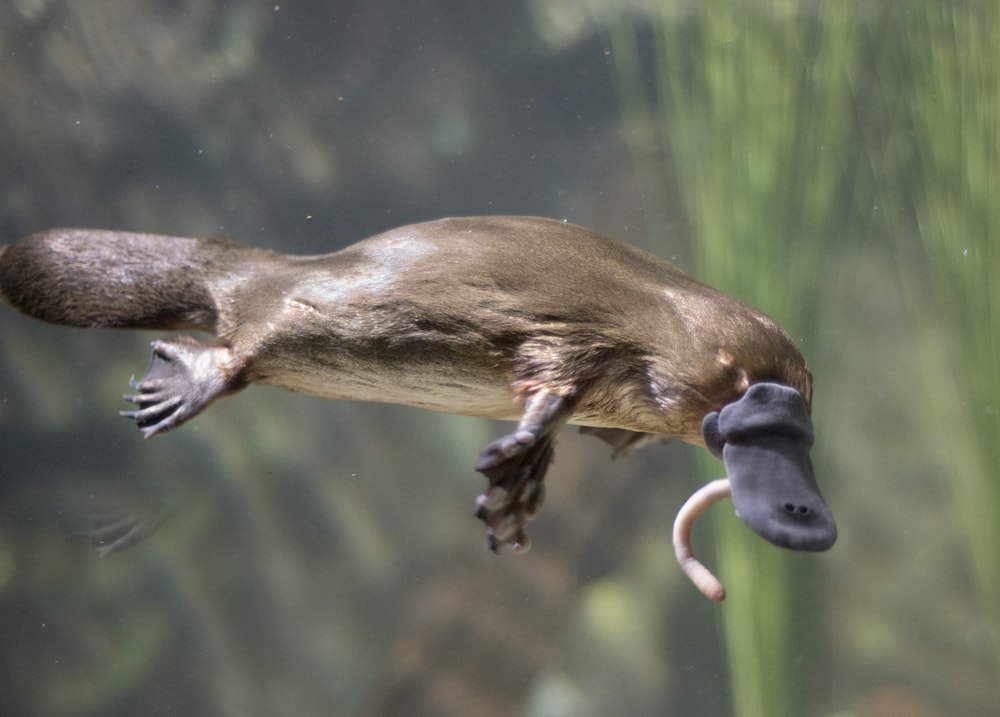
This classic rebel of evolution is also a monotreme. Let me introduce you to a duck-billed, otter-bodied, beaver-tailed, and venomous-spurred mammal! The male has poisonous spurs on his back legs.
The female platypus lays her eggs in a burrow dug out of the riverbank. After 10 days, the baby platypuses hatch. The female then nurses them with her milk for four months. During this time, she seals herself in her burrow. She keeps one or two eggs warm by holding them between her tail and her body.
Salamander
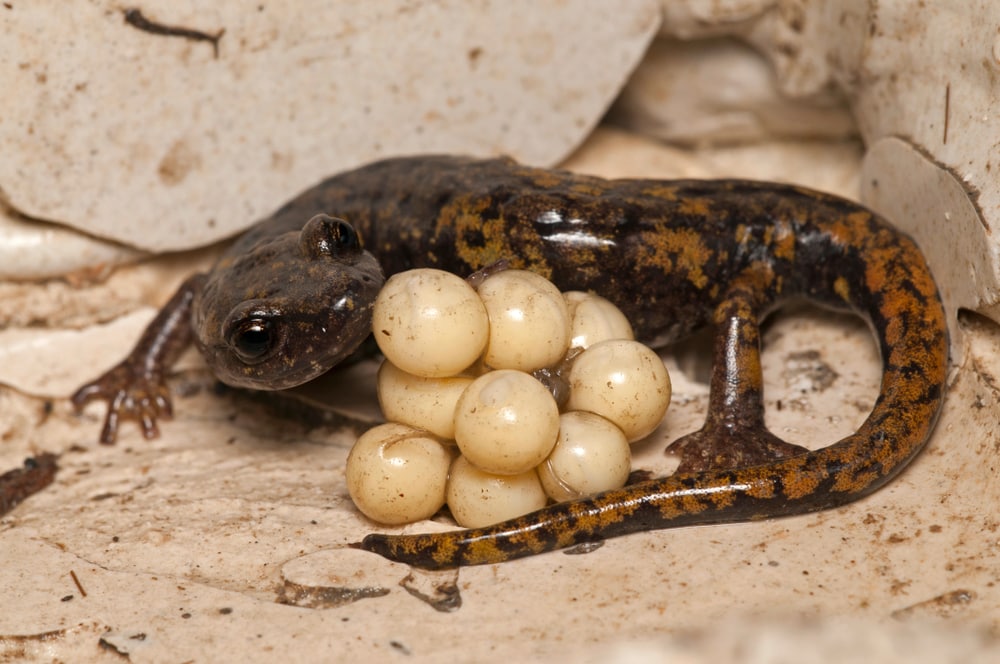
The mythical salamander lived in fire, but that’s the opposite of what the real salamander does! Real salamanders live in pools and rivers. They are soft-skinned aquatic creatures.
The male salamander deposits a packet of sperm called a spermatophore on the ground near the female. She then moves over it and picks it up, putting it into her cloaca (egg-laying channel).
She lays eggs on sticks or rocks in a damp environment. Sometimes she will stay and guard them, depending on the species. When the baby salamanders hatch, they are like tadpoles!
Frogs
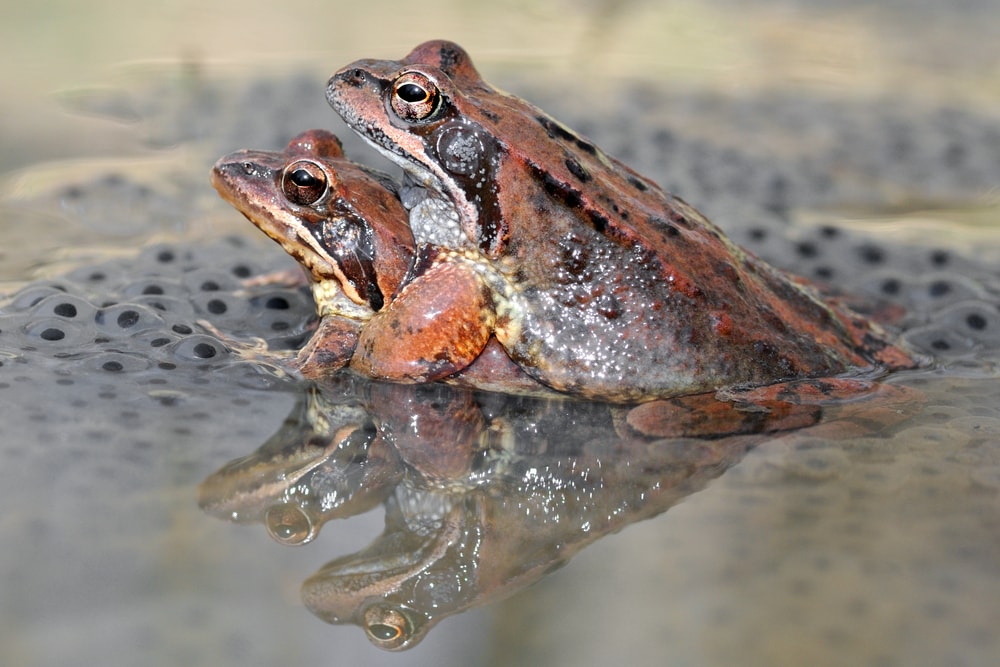
Don’t you just love hearing the chirping, ribbiting calls of mating frogs in pools? Frogs reproduce externally. This means the male frog rides on the female’s back whilst she is laying eggs. He sheds his sperm over them as they are laid.
This is a good reason why the female frog is often larger than the male!
Frogs can lay up to 5,000 eggs in a single ‘sitting’! You will know this as slimy, see-through ‘frogspawn.’
After two to three weeks, the eggs hatch. The tadpoles live off their own egg yolk for the first few days. Then, they have to seek out food on their own.
Newts
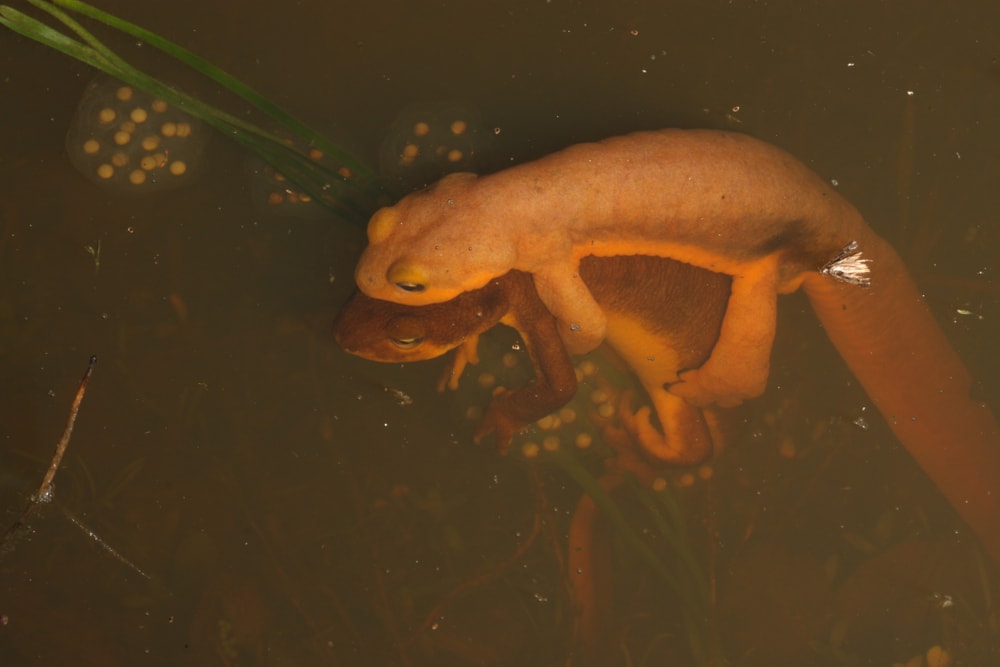
Newts reproduce in a similar way, but the females are a bit more choosy. A male newt must first impress the female with a display of ‘tail wagging’! If his moves are satisfactory, she will let him fertilize her eggs externally.
Newt mothers often take more care of their eggs, too. Many wrap each individual egg in the folds of a water plant, hiding it from predators. Newts can lay 300 eggs this way – that’s a lot of wrapping! The mother newt can be at this for many hours.
You may also like: 30+ Types Of Amphibians: Identification Guide With Pictures + Facts
Sharks

Okay, first off, a lot of sharks don’t lay eggs. These sharks are viviparous, meaning they give birth to live young. A good example is the lemon shark. The young mature inside their mother and are born live in a litter of up to 17!
However, a smaller number of sharks do lay eggs. This includes dogfish, catsharks, nursehounds, and rays (though rays are not strictly a shark).
Shark species like dogfish often produce ‘mermaid purses,’ which I used to love finding as a child washed up on the beach. These leathery, semi-translucent cases have tough tendrils which anchor the dogfish egg firmly until the young dogfish hatches.
You may also like: How Do Sharks Mate? It Might Surprise You
Eels

Freshwater eels are believed to spawn in the Sargasso Sea. This is after a journey of many thousands of miles from their home rivers! But how they mate is still a bit of a mystery. For many years no one could work out how eels have sex.
Researchers think eels reproduce via external fertilization, the same way as salmon and frogs. The female releases clouds of millions of eggs into the water. The adult eels then die afterward.
What makes eels amazing is their massive migration back to the place of their birth. Young eels (elvers) are tiny and glasslike, and must return to their home rivers. They are helped along by ocean currents such as the North Atlantic Drift.
Crabs
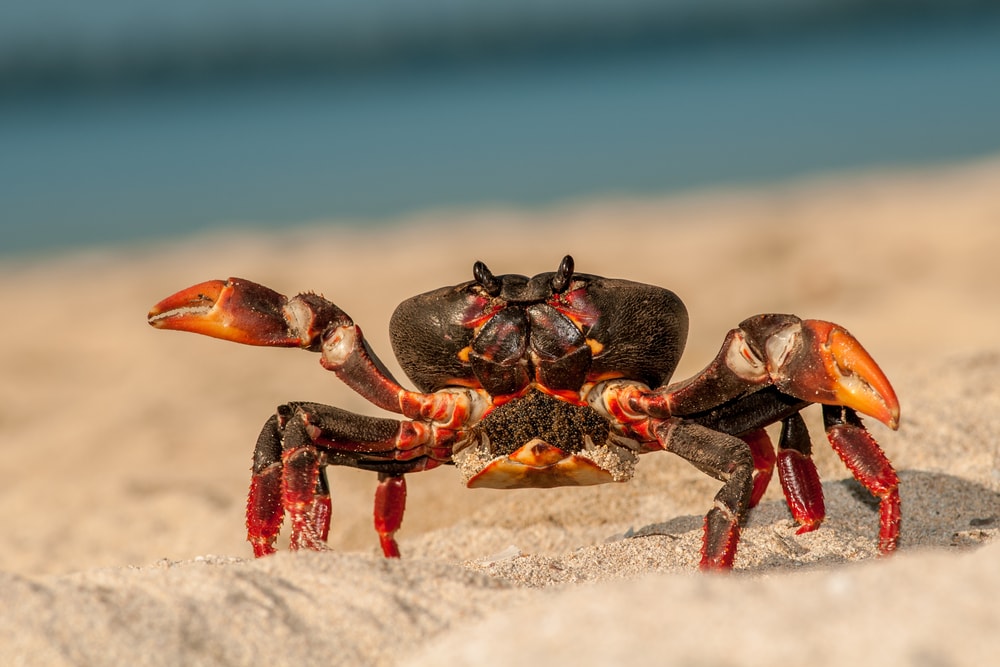
Once a female and male crab mate, a female decapod crab can store the male’s sperm until her eggs are ready to be fertilized.
When she lays her eggs, she unloads the male’s sperm packet over them. She then holds her eggs under her abdominal flap. This is what you see when you look underneath a crab and see ‘berries.’ She keeps waving water over them to keep them healthy.
When the eggs hatch, the tiny zoea larvae look nothing like mum! They drift away in the ocean currents. Gradually they turn into megalops, which look more crab-like. They do this by adding more segments to their body at each molt.
Molting is when the crab sheds its old skin so it can grow.
Corals

Corals may look like pretty underwater plants, but they are animals! They eat meat! If you look closely inside the hard structures they built to protect themselves, you will see tiny tentacled animals.
One plant-like coral is actually made of hundreds or thousands of tiny carnivores. They stick their tentacles out of the structure to catch even tinier passing organisms.
Corals can reproduce in three ways: budding, spawning, or asexual reproduction (without a partner of the opposite sex). When the moon cycle and water conditions are just right, many species of coral release their gametes (sperm or eggs) into the water all at the same time.
The gametes fuse together in the sea and turn into coral larvae. These drift on the ocean current until they find a rock to attach to.
Jellyfish
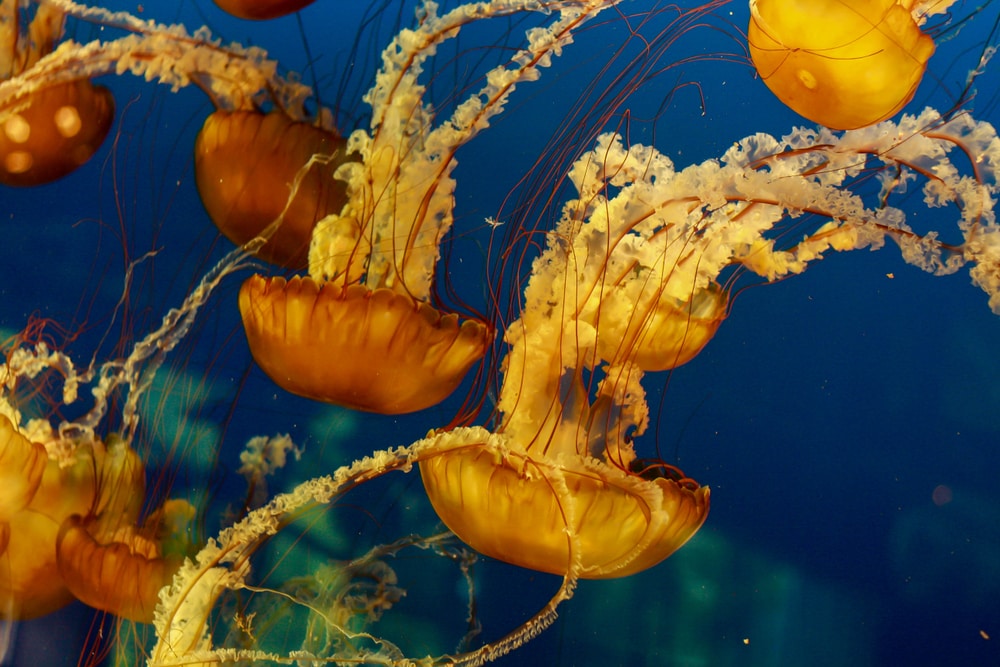
Another cnidarian, jellyfish, drifts in the ocean, catching unwary prey with stinging tentacles. They can reproduce both sexually and asexually throughout their lifetime!
Adult medusae (the strange and beautiful tentacled drifter we recognize) release sperm and eggs into the water. Some female jellyfish take up the sperm via their mouths and fertilize their eggs from within!
Once an egg has hatched, it is called planulae. It finds a hard surface and attaches itself, turning into a polyp. They look a lot like coral by then. They can split in half to reproduce asexually, turning into another polyp. Or growing into more medusae!
Just when you thought life couldn’t get any weirder…
Fish

There are a great many egg-laying fish. Many fish, such as salmon, reproduce in the same external way as frogs.
The female lays eggs and the male releases his sperm to coat them and fertilize them. The trick, in a vast wide space like the ocean, is to get the aim right!
Below are a couple species of interesting fish and how they lay eggs!
Ocean Sunfish
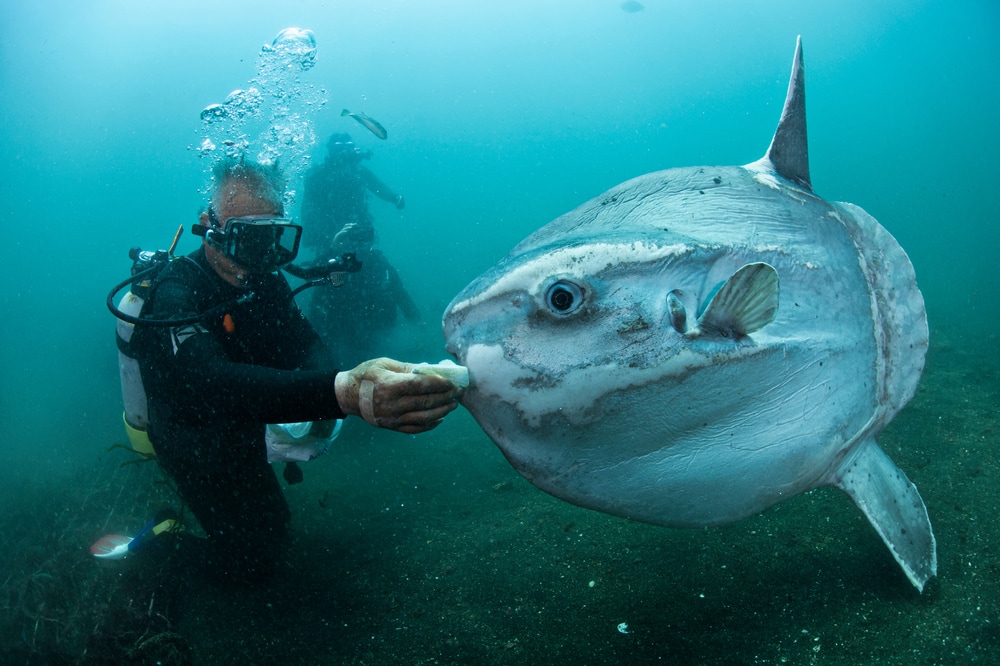
The vast, tank heavy ocean sunfish holds the record for two things. It is the heaviest bony fish in the world, weighing in at an impressive 5,000 pounds (over 2.3 metric tons!).
It also holds the prize for the most eggs laid. A female sunfish can lay hundreds of millions of eggs in one go.
Sturgeon
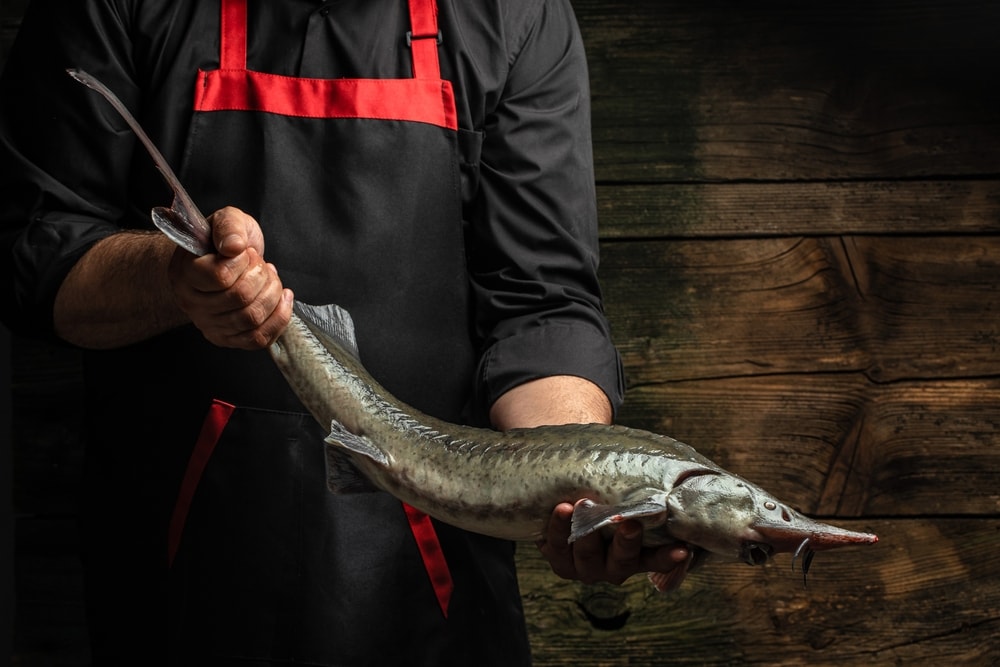
The Russian Sturgeon (Acipenser gueldenstaedtii) is a critically endangered fish due to being over popular! This is the fish that supplies eggs to be used as caviar. The female Beluga sturgeon can take over 15 years to reach maturity.
Female sturgeon are farmed and ‘milked’ for their eggs, which are sold as caviar. It is regarded as a high-value delicacy. One 10g (0.35 oz) pot of caviar can cost $60 at least.
You can check out this video on how a Russian Sturgeon Caviar is farmed and processed and how to make it:
Birds

Birds are unique as the only animal family where all members are oviparous (egg-laying).
Researchers think this feature evolved as birds need to be light enough to fly. So, the mother lays eggs. She is then mobile enough to fly and get food as the embryos mature. Here are a couple of birds worth noting:
The ostrich is the world’s largest bird, so it only makes sense that it lays the largest egg. Ouch! One ostrich egg is equivalent to 24 chicken eggs and is as long as an adult’s hand (roughly 22cm).
Ostriches share child care. Several ostriches will lay their eggs in one nest. The male and female take turns looking after the nest. Now that’s teamwork!

We can’t talk about the largest bird eggs without talking about the smallest. Hummingbirds have the world’s smallest eggs. The vervain hummingbird of Jamaica lays eggs that are only 0.365 g (0.013 oz) in weight and less than 10mm (0.39 in) long.
An entire hummingbird nest can be only 3cm (1.2 in) in diameter!
Animals That Lay Eggs FAQs
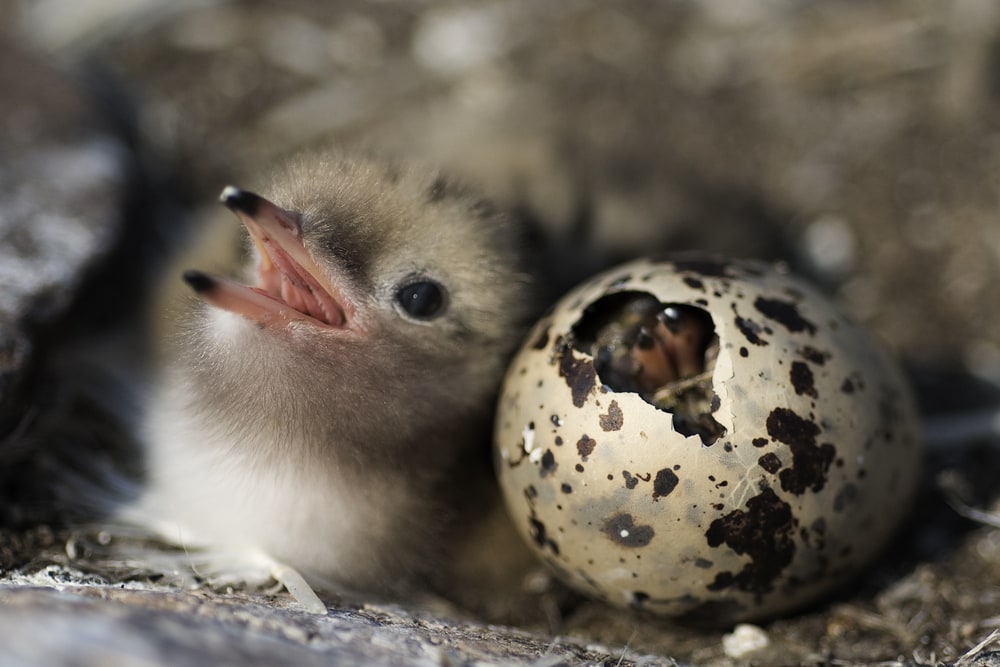
What reptiles lay the most eggs?
Sea turtles can lay around 50 to 100 eggs at a time, so that makes them the winners here!
Crocodilians come second, which clutch (number of eggs in one nest) between 13-55. This can vary due to how healthy the mother reptile is, food availability, and environmental conditions.
Do some reptiles give birth to live young?
Yes, they do. 20% of all snake species are viviparous, giving birth to live young. Many lizards are viviparous, too, including the Common Lizard, (Zootoca vivipara).
This lizard keeps its soft-shelled eggs inside her body. They hatch inside her, and she gives birth to live young. Which gives the baby lizards a sporting chance against predators!








